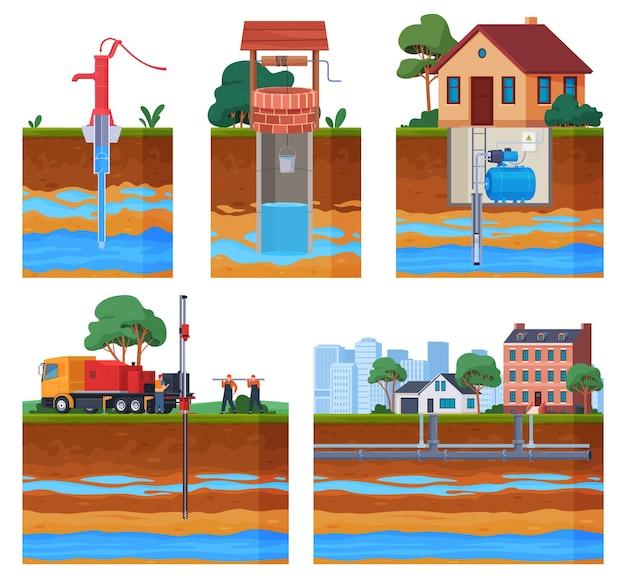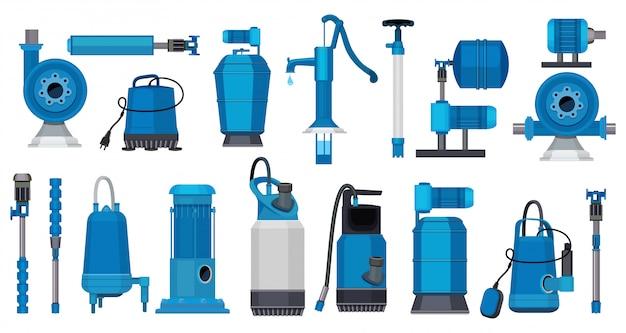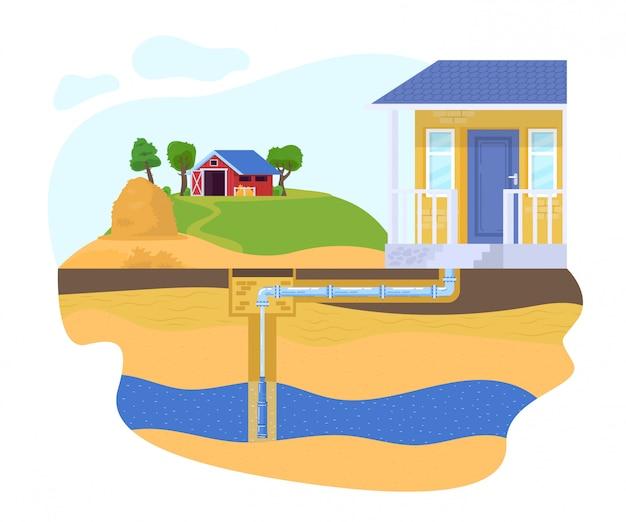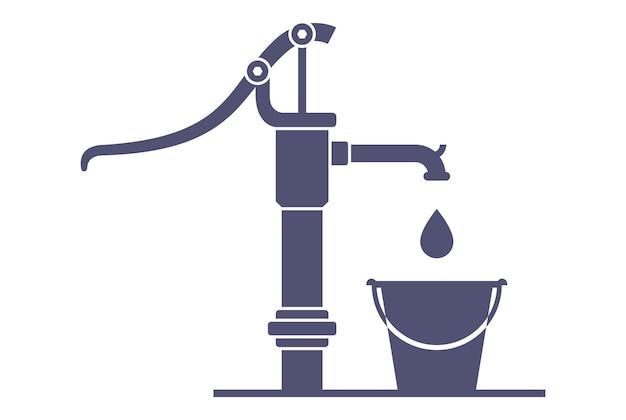Are you suddenly experiencing no water in your house well pump? Don’t panic! It’s a common problem that can occur due to various reasons. However, it’s essential to diagnose the issue and fix it as soon as possible to avoid significant water damage.
In this blog post, we’ll discuss the signs and symptoms of well pump failure and how to test your well pump. We’ll also explore the reasons why your well pump may suddenly stop working and the steps you can take to fix the problem.
If you’re wondering about the symptoms of a bad pressure switch on your well, we’ve got you covered. We’ll provide tips and tricks on how to maintain your water well pump to avoid such issues.
So, whether you’re facing an emergency situation or want to be proactive in maintaining your well pump, this blog post is for you. Keep reading to find out what to do if there’s no water in your well and why no water might be coming out of your well pump.
Overview: No Water in House Well Pump
If you live in a house with a well pump, you may have experienced the inconvenience of having no water. This can be a frustrating experience, especially if you are not sure what is causing the problem or how to fix it. In this blog post, we will go over some common reasons why there may be no water in your house well pump and what you can do to troubleshoot the issue.
Malfunctioning Pressure Switch
The pressure switch for your well pump is responsible for turning the pump on and off as needed to maintain a consistent water pressure in your home. If the pressure switch is malfunctioning, it can cause the pump to either not turn on at all or to stay on all the time, which can lead to water pressure issues.
To check if the pressure switch is the problem, you can use a multimeter to test the continuity of the switch. If it has failed, you may need to replace it with a new one.
Clogged Well Screen
A clogged well screen is a common cause of no water in the house well pump. The well screen is a filter at the bottom of your well that keeps debris and sediment from entering the pump. Over time, the screen can become clogged and prevent water from flowing through.
To fix this issue, you may need to have the well screen cleaned or replaced by a professional well technician.
Low Water Table
If your well is not producing enough water, it could be due to a low water table. A water table is the level in the ground where water is present. If the water table drops, your well may not be able to produce enough water to meet your household needs.
Unfortunately, there is not much you can do to fix a low water table. You may need to drill a new well or install a storage tank to help supplement your water supply.
In conclusion, there are several reasons why your house well pump may not be producing water. It could be due to a malfunctioning pressure switch, a clogged well screen, or a low water table. If you are experiencing this issue, it is best to call a professional well technician to diagnose and fix the problem.
Remember to perform routine maintenance on your well pump to prevent these issues from occurring in the first place. This includes regular cleaning of the well screen, testing the pressure switch, and having your well inspected by a professional every few years.
By following these tips, you can ensure that you always have access to clean water in your home.
Water Well Pump
A water well pump is an essential component of a private water well. It is responsible for bringing water from underground to the surface and delivering it to your home. There are different types of water well pumps available, including jet pumps and submersible pumps. In this subsection, we will discuss the various types of water well pumps and their features.
Jet Pumps
Jet pumps are the most common type of water well pumps. They are ideal for shallow wells where the water table is less than 25 feet deep. They work by creating suction that pulls the water up from the well. Jet pumps have two pipes – one for the water and the other for the jet. The jet pipe creates a vacuum that lifts the water up from the well.
Submersible Pumps
Submersible pumps are designed for deeper wells and offer more power and efficiency than jet pumps. They are placed deep underground and push the water up from below. Submersible pumps are ideal for wells that are deeper than 25 feet. They are more expensive than jet pumps but require less maintenance and are more energy-efficient.
Constant Pressure Pumps
Constant pressure pumps deliver a constant water pressure to your home. They are designed to keep the water pressure consistent despite changes in water demand. These pumps increase or decrease their pumping speed to maintain a constant pressure, which can help reduce water waste and energy usage.
Solar-Powered Pumps
Solar-powered pumps use energy from the sun to power a water well pump. They are ideal for remote areas where access to electricity is limited. Solar-powered pumps are environmentally friendly and cost-effective in the long term. They may require a higher initial investment, but they can pay for themselves through energy savings over time.
Water well pumps are crucial components of private water wells. You need to choose the right type of pump depending on your well’s depth, water demand, and energy efficiency needs. Jet pumps are suitable for shallow wells, while submersible pumps are ideal for deeper wells. Constant pressure pumps and solar-powered pumps are also worth considering. Do your research and consult a well professional to determine which type of water well pump is right for you.
Testing Your Well Pump: Ensuring Your Water Supply
If you’re experiencing low or no water pressure in your home, it could be a sign that your well pump isn’t working correctly. In this section, we’ll walk you through the steps to test your well pump to identify the problem.
Step 1: Turn Off Your Power
Before starting any work on your well pump, make sure you disconnect the power from your water system. This is important for your safety and to prevent any damage to your pump.
Step 2: Check the Pressure Gauge
The pressure gauge on your well pump is a good indicator of your system’s performance. Turn on a faucet and observe the pressure gauge. If the gauge shows pressure but drops quickly or fluctuates dramatically, it may indicate a problem with your pump.
Step 3: Inspect the Pump
If the gauge indicates low or no pressure, the next step is to inspect the pump. First, check the wiring and connections to make sure they are secure and tight. If everything seems fine, move on to the pressure switch.
Step 4: Pressure Switch Test
One common issue with well pumps is a faulty pressure switch. To test whether your switch is working correctly, follow these simple steps:
- Turn off the power to your pump.
- Remove the cover from the pressure switch.
- Carefully disconnect the wires from the pressure switch.
- Use a volt-ohm meter to test the switch’s continuity.
- If the switch doesn’t have continuity, it’s faulty and needs replacing.
Step 5: Check Your Pipes
If neither the gauge nor pump indicate a problem, your next step is to inspect your well’s pipes. Look for any leaks, cracks, or damage that could be affecting water flow.
By following these simple steps, you can test your well pump and identify any issues. Keep in mind that proper maintenance is key to avoiding problems with your well pump. Be sure to schedule regular maintenance and inspections to keep your water flowing smoothly.
“No Water in House Suddenly” Subsection:
Have you ever turned on the faucet, only to find there’s no water coming out? We’ve all been there, and it can be frustrating. In this subsection, we’ll talk about what might cause a sudden loss of water in your house.
Burst Pipes
One of the most common reasons for a sudden loss of water is a burst pipe. Pipes can burst due to extreme cold, age, or wear and tear. If a pipe bursts, you’ll likely notice a decrease in water pressure or no water at all. If you suspect a burst pipe, you should turn off the main water supply to your house immediately and call a plumber.
Well Pump Failure
If you have a well, your water supply relies on a well pump. If the well pump fails, there may not be water coming out of your faucets. There are several reasons why a well pump may stop working, including electrical issues, a broken pressure switch, or a worn-out motor. If you suspect a well pump failure, it’s best to call a professional to diagnose and fix the problem.
Main Water Line Issues
If there’s a problem with the main water line supplying your house, you’ll likely experience a sudden loss of water. The main water line can be affected by issues like leaks, blockages, or construction work in the area. If you suspect a problem with the main water line, you should contact your water provider or a plumber.
Seasonal Issues
Sometimes, a sudden loss of water in your house can be due to seasonal issues. For example, in extremely cold weather, pipes can freeze and burst. On the other hand, in extremely hot weather, the increased demand for water can put a strain on the supply. It’s important to take precautions to prevent seasonal issues, such as insulating pipes in winter and reducing water usage during hot weather.
Conclusion:
In conclusion, a sudden loss of water in your house can be caused by several issues, including burst pipes, well pump failure, main water line issues, and seasonal issues. If you experience a loss of water, it’s important to identify the problem quickly and take the necessary steps to fix it. By doing so, you can ensure a steady water supply in your house and avoid unnecessary inconvenience and expense.
Signs of Well Pump Failure
If you rely on a well pump to supply your home with water, you may eventually encounter problems that require repairs or replacement. Recognizing the signs of well pump failure can help you avoid severe water shortages and costly repairs.
Decreased Water Pressure
If you notice that the water pressure in your home has decreased, your well pump may be experiencing issues. A drop in pressure could indicate a problem with the pump, waterlogged pressure tank, or clogged pipes. A professional plumber can diagnose and repair the issue.
Short Cycles
If your well pump cycles on and off frequently, it could mean that there is a leak or a malfunction in the system. Short cycling can lead to premature pump failure and cause electric bills to skyrocket. It’s best to seek professional help to fix this issue before it becomes more severe.
Strange Noises
If you hear unusual grinding, squealing, or other odd sounds coming from your well pump, it’s a sign that something isn’t working correctly. Motor bearings, impellers, and other components may wear out over time, causing unusual noises. A qualified technician can identify and fix the issue to avoid further damages.
Dirty or Cloudy Water
If you notice that the water from your faucets has become cloudy or discolored, your well pump may be drawing in dirt and debris from the surrounding area. Water testing can help identify the cause, and installing proper filtration systems can prevent the issue from recurring.
High Electric Bills
If you’ve noticed a considerable increase in your electric bill, it could be a sign of a failing well pump. An inefficient pump or one that is struggling to function can cause your electric bill to increase rapidly. A professional well pump service can evaluate the unit and recommend the best course of action.
By recognizing these signs of well pump failure, you can take action early and prevent further damages to your well system. Regular maintenance checks and timely repairs will help sustain your well pump’s performance and keep your household water supply flowing smoothly.
Symptoms of a Bad Pressure Switch on a Well
If you rely on a well pump to deliver water to your home, you understand the importance of a functioning pressure switch. The pressure switch is a vital part of your well system, responsible for turning the pump on and off, maintaining proper water pressure, and preventing damage to your pump. However, when the pressure switch goes bad, it can lead to a variety of issues. Here are some of the most common symptoms of a bad pressure switch on a well.
Inconsistent Water Pressure
One of the most noticeable signs of pressure switch problems is inconsistent water pressure. When the switch is failing or has failed, the pump may turn on and off too frequently, causing fluctuations in water pressure. You may notice that your water pressure is lower than normal or that the water flow is interrupted. If you are experiencing inconsistent water pressure, it may be time to inspect your pressure switch.
Short Cycling
Short cycling is when your well pump turns on and off more frequently than is necessary, which can lead to premature wear and tear on your pump and its components. If you hear your pump turning on and off more frequently than usual, it could be a sign that your pressure switch is bad.
Overheating Pump
When a pressure switch fails, it can cause your pump to overwork and overheat. This will eventually lead to pump failure and more significant repair costs. If your well pump is hotter than usual or is overheating quickly, you may have a bad pressure switch.
No Water Supply
If you have a bad pressure switch, your well pump may not turn on at all, which means you won’t have any water supply to your home. This can be a frustrating and sometimes scary situation, especially if you rely on well water for your daily needs.
If you are experiencing any of these symptoms, it’s essential to address them as soon as possible to avoid more significant issues and costly repairs. A bad pressure switch can cause inconsistent water pressure, short cycling, an overheating pump, and even a complete loss of water supply. Don’t wait until it’s too late; inspect your pressure switch regularly and call a professional if you notice any problems.
What to Do If There is No Water in the Well
If you notice that there is no water coming from your faucets, this could be an indication that there is a problem with your well. Don’t panic; several steps can be taken to determine the root cause of the issue. Here are some things you can do:
Check the Power
Sometimes, the power supply to the well pump might get interrupted, causing the pump to stop working. Check that the circuit breaker controlling power to the well pump is switched on and that all other connections are secure.
Examine the Pressure Tank
The pressure tank works together with the well pump to maintain constant water pressure in your home. However, if the tank is faulty, water may not flow into the tank from the well. Check the pressure tank to ensure it is working correctly.
Inspect the Pipes
Sometimes, pipes that deliver water from the well to your home can become clogged, causing no water flow. Check for any visible signs of damage or leaks.
Call a Professional
If you have checked everything else and still can’t find the issue, it might be time to call a well professional. They will have more advanced tools to diagnose any issues with your well and pump and provide the appropriate solution.
In any case, always make sure your well is in excellent condition to avoid any water shortage or disruption to your daily routine.
Why Isn’t Water Coming Out of My Well Pump
If you’re experiencing no water coming out of your well pump, it can be frustrating, inconvenient, and sometimes even alarming. You might be wondering what is causing this issue and how it can be fixed. In this section, we will discuss some common reasons why there is no water coming out of your well pump.
Power Outage or Tripped Breaker
Before assuming the worst, check if there is a power outage. Make sure that the breaker for the well pump is on. However, if there is power and the breaker is on, you may have a faulty pressure switch or a burned-out well pump motor.
Low Water Table
A low water table can cause problems with your well system. A drop in the water level can cause your well pump to start sucking air instead of water, leading to no water coming out. In this case, you may need to drill a deeper well or wait until the water table rises.
Clogged Pipes or Pump
If your well pump or pipes are clogged with debris or mineral buildup, it can cause low water pressure or no water coming out at all. In this case, you may need to clean or replace the pump or pipes to restore water flow.
Well Pump Failure
A well pump has an average lifespan of 10-15 years. If your pump is older than that or is showing signs of wear and tear, it may have failed and needs replacement. A qualified technician can test and diagnose any issues with your well pump and offer recommendations.
In conclusion, several reasons can cause no water coming out of your well pump, ranging from simple fixes to complex replacement jobs. Before taking any action, it is best to consult a professional who can diagnose the issue and offer a suitable solution.



